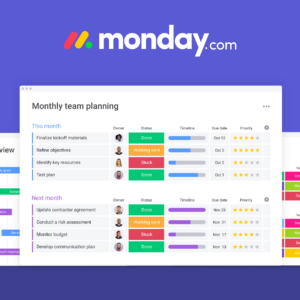The strongest businesses have a solid foundation with a blueprint to achieve an apex of success. Much like the structural integrity and strength of the pyramid, you can implement a proven process to continually ensure IT projects are completed without a hitch.
Joseph Garfield, CEO of Phase 3, specializes in IT program and project management. He has much to teach about scaling operations and creating frameworks to better support companies and their business infrastructure.
Learn about Garfield’s 3D Project Delivery framework in his interview on the Business Infrastructure podcast.
Coming from the operations and IT world, his insight can help you simplify and streamline your delivery of such projects. The very meaning of his company name, Phase 3, symbolizes the “pyramid” approach he takes to IT product and project management.
The “Pyramid” Approach to IT Product Delivery
If you think of the pyramid, it all starts with a wide and supportive foundation. You’ve got to have good, capable people who care about customers and your business. Here, you hire the top talent you can find who can contribute to and support your company’s larger initiatives and goals.
Projects and processes are the second level of the pyramid. In this phase, you give people on your team a blueprint for the project they are going to deliver. All the tools required for success are included in the blueprint.
The third, or top-level (Phase Three) involves the pinnacle of the pyramid, and it’s the capstone of results. The whole reason that your company operates is your pinnacle. With the support of the first and second levels of the pyramid, you approach success inevitably and repeatably since you have built a framework for consistency.
A “3D” Approach to IT Management
Discovery. Design. Delivery. Joseph Garfield spells out his 3D approach to IT management and project delivery through a simple methodology. It helps to improve IT projects, workflows, and processes.
#1 Discovery
Discovery means asking yourself where you are and where you want to go. Before engaging a CRM or another system to streamline your workflows, consider your needs as an organization and envision a custom solution that would fill your requirements perfectly. With this vision, you can pivot to designing a solution for your business.
In addition, consider the ways that the projects you are working on really matter. Who do they impact, and who are your stakeholders? You must find the right people and experts to help you find out what success looks like to those who care about the outcome of your projects.
#2 Design
Within design, you can build a time-sensitive project plan in which you identify what your deliverables will be during the project. Then, map out what actions you will need to take to respond to and create those deliverables. From here, you can easily identify the effort, resources, and people that these tasks must draw on for effectiveness.
#3 Delivery
Here, it’s time to put all your plans into action. With insight into the action steps in your project, you can start knocking out the real work of your IT project plan. Schedule meetings, get everyone in sync, and inform your leaders of milestones.
Also, you will need to have a testing phase within your service delivery to ensure that you can implement the technology with minimal downtime and disruption. Part of this means training users and employees on the new system, requiring resources, time, and talent.
Final Thoughts
The beauty of streamlining your processes by connecting people, processes, and tools is that it gives your business an opportunity to grow and scale to meet customer demands. By learning from Joseph Garfield and implementing his 3D approach to I.T. project management you can also streamline your company’s processes to quickly scale and better serve your customers.












